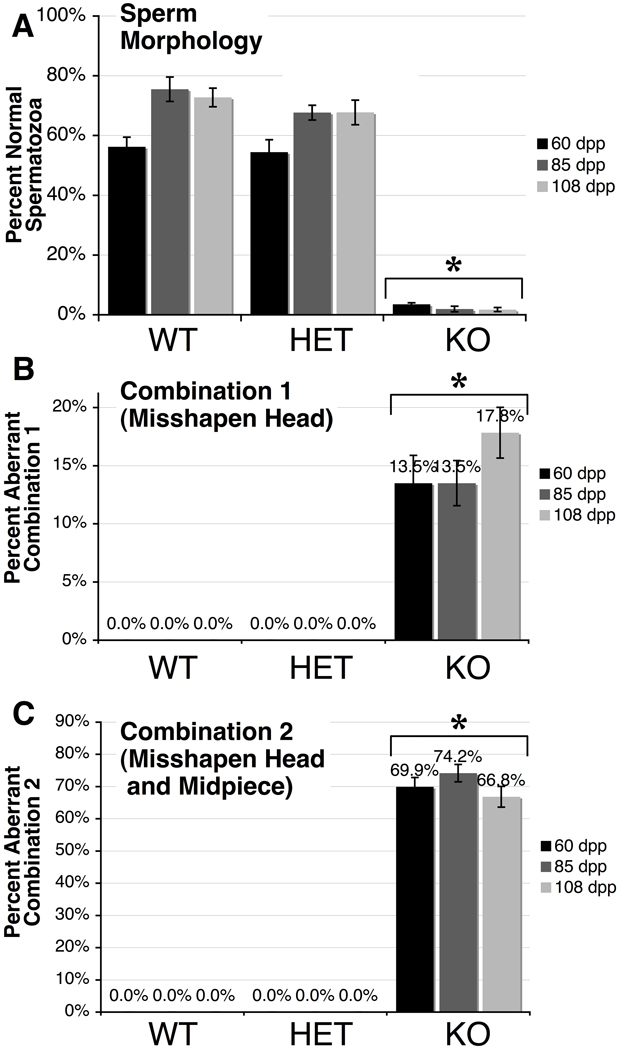Fig. 2.
Sperm morphology of Cstf2t−/− mice is greatly abnormal. Sperm smears from mouse cauda were examined and scored as “normal” (lacking visible defects) or as displaying head, midpiece or tail anomalies (see Materials and Methods). Scoring was performed on caudal smears from mice at 60 (black bars), 85 (dark gray bars) and 108 dpp (light gray bars) that were wild type (WT), Cstf2t+/− (HET), or Cstf2t−/− (KO). A) Percent of spermatozoa that appeared normal. B) Percent of spermatozoa that had misshapen and variably microcephalous heads (Combination 1). C) Percent of spermatozoa that had misshapen, variably microcephalous heads, and thin or indistinguishable midpieces (Combination 2). Error bars are standard errors of the mean; asterisks indicate groups that were significantly different from other groups (P < 0.001) after ANOVA using Kruskal-Wallis non-parametric method and Dunn’s multiple comparisons post-test. Other morphology scores are listed in Supplemental Table 2.

